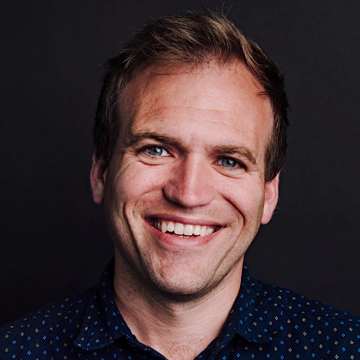Recently the world marked the 500th anniversary of the Protestant Reformation.
In the U.S. and Europe, churches dedicated entire services and sermon series to the subject, tracing their theological history back to Oct. 31, 1517, Reformation Day. In Germany, where the date was declared a national holiday, more than 2 million people from across the world pilgrimaged to Wittenberg, the birthplace of the Reformation, to breathe the air of the historic occasion.
I was one of the many who traveled to Wittenberg and retraced Martin Luther’s famous path to the All Saints’ Church, where he nailed his 95 Theses.
Who would’ve believed an unassuming 800-yard street, which was all Wittenberg was five centuries ago, would set the scene for the events that shaped modern Western civilization? Yet Luther’s act of defiance that day had such historical significance that Time magazine has listed him among the top 10 greatest people of the last millennium.
Without a shadow of a doubt, the Protestant Reformation stands firmly as the most consequential event in modern Christianity and Western history. Yet in the weeks leading up to the Reformation’s quincentennial, I noticed most modern observers missed the fact that the Reformation didn’t just change the West; it also changed the East.
The heart of Martin Luther’s Reformation was the emancipation of the human mind and spirit from an institution to a higher authority. “I am bound by the Scriptures I have quoted and my conscience is captive to the word of God,” said Luther, defying the Holy Roman Catholic Church, at the time the most powerful religio-political institution in the world. Luther’s message was inherently democratic. His assertion that everyone should have equal, unhindered access to the Scriptures was perhaps the first declaration of a universal human right. To this day, historians trace the development of modern individual rights, free inquiry, the separation of church and state, universal education and even capitalism back to the Reformation.
Though Jesuit presence in India can be traced back to the 16th century, the Reformation arrived in full force in the 18th century, with Protestant missionaries. With them, they brought the biblical culture that had transformed the West.
“The missionaries from the lands of the Reformation brought their catechisms, theological books, church histories and literature from the Renaissance, the Reformation and the Enlightenment,” wrote professor P. Daniel Jeyaraj in an article for the Princeton Seminary Bulletin.
William Carey, “the father of modern missions,” was one of the key Protestant figures during this time. In line with the Protestant belief of having the Bible available in the culture’s vernacular language, he translated it into half a dozen major Indian languages and into dozens of dialects. He also translated Hindu classics into English, serving as a cultural bridge between the East and the West.
The deep emphasis of the Reformation on the education of the individual led Carey to invest in the field of education. George Smith, Carey’s biographer, notes that he founded what could be considered the first primary school in India and paved the way for early English education in India.
In a time when learning to read and write was reserved for the privileged, he advocated for the education of lower castes and of women. A passionate botanist and humanist, Carey also started the Agricultural and Horticultural Society of India and devoted himself to studying Indian culture, earning the title of “India’s first cultural anthropologist.” Serampore College, another institution launched by Carey, is the second oldest higher education institution in India, and to this day is one of the premier theological schools in India.
Perhaps Carey’s best-known work in social reform was advocating for the banning of the Sati practice in which widows immolated themselves or committed suicide after their husband’s death. Along Hindu reformers and other Protestants — even reaching to the House of Commons — he rallied against the practice until the provincial government outlawed it in 1829.
In 1993, on the bicentenary of Carey’s arrival to Kolkota, the Indian government released a commemorative stamp, celebrating his legacy. Not mentioning the accomplishments listed above, the stamp highlighted Carey’s starting 100 rural schools and encouraging girl’s education; compiling dictionaries in Sanskrit, Bengali, Marathi and Telugu plus grammar books in five other languages; printing the first Indian newspaper, “Samachar Darpan”; laying the foundation for the botanical gardens in Calcutta; and introducing the financial concept of a savings bank to rural farmers.
Carey’s legacy was also recently commemorated by Museum of the Bible in Washington, D.C. The museum, which tells the story of the influence of the Bible in politics, culture and human history, released a short video on Carey’s impact on India.
William Carey, and many other Reformers who traveled to India, China, Korea and every corner of the Far East, carried the Reformation with them, impacting nations with the biblical values they had absorbed in the West.
Even Pyongyang, the capital of today’s rogue state North Korea, was once known as the “Jerusalem of the East,” with a deep influence of Protestant intellectualism. South Korea, where the Protestants fled after the peninsula was split at the end of WWII, became a new hub for Protestants. Historians have found that the South Korean economy boomed with the influx of Protestants, another nod to the Reformation’s link to the emergence of capitalism.
The Protestant Reformation unleashed a biblical movement whose ripple effects we still feel today — whether we’re in the West or the East.
• Joseph D’Souza is the moderating bishop of the Good Shepherd Church and Associated Ministries of India. He is president of the All India Christian Council and is the founder and international president of the Dalit Freedom Network.
Read more at When Reformers traveled to India, China and Korea.
